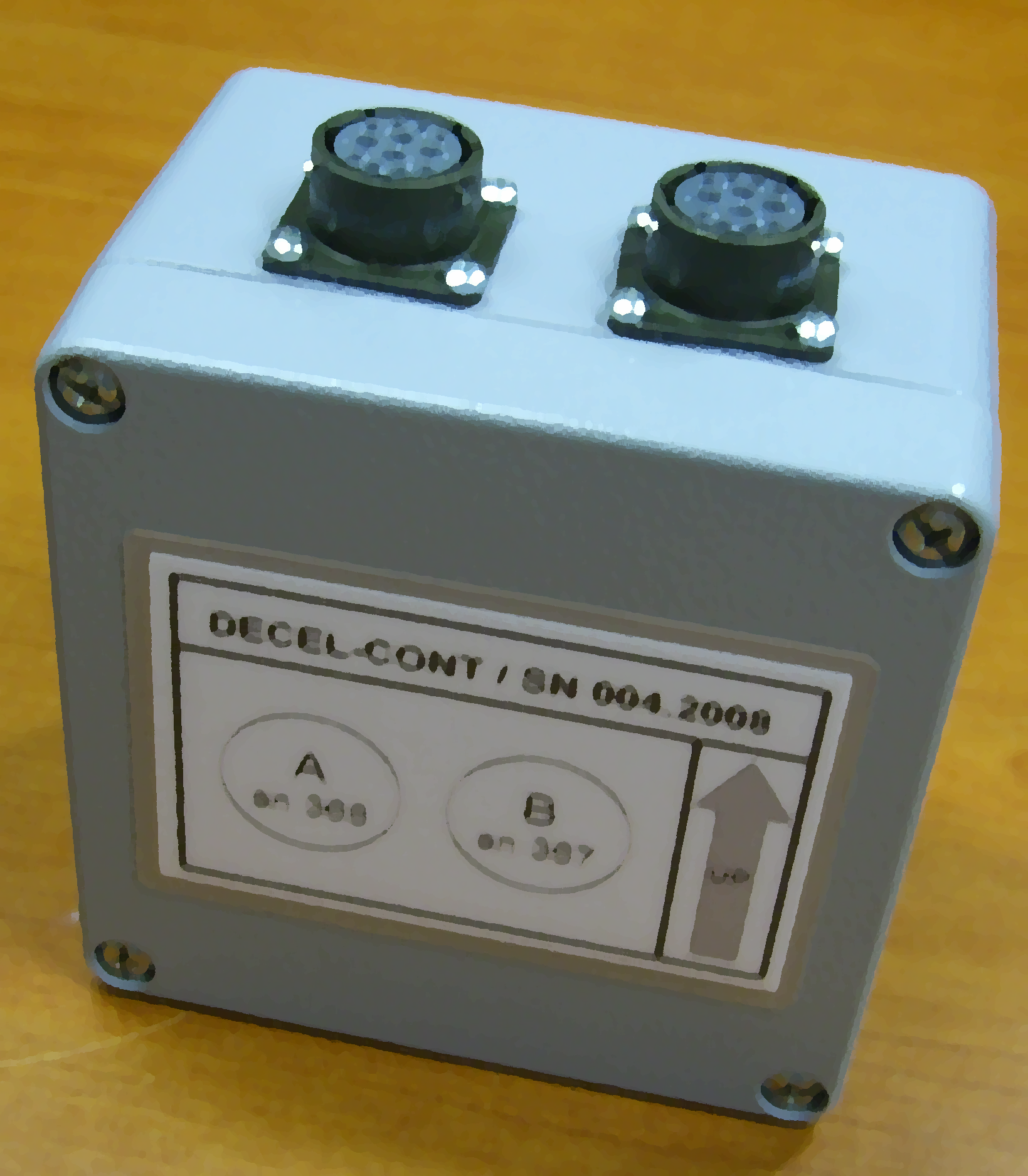TSC - Triaxial Seismic Controller
Vibration Level Measurement and Control System
The TSC (Triaxial Seismic Controller) is a vibration measurement and control device with three axes, designed to monitor vibration levels and activate relays when preset thresholds are exceeded.
-
The TSC (Triaxial Seismic Controller) device is a measurement/control system designed to measure vibration levels across three axes and, in the event of exceeding pre-set alarm thresholds, trigger the closure of relay contacts.
The system is housed in a die-cast aluminum enclosure with IP66 protection and uses XLR connectors or, upon request, MIL Standard connectors.
The TSC is equipped with a high-performance MEMS tri-axial accelerometer and is particularly suitable for monitoring and managing seismic event alarms.
Thanks to the advanced microcontroller system, the user can set (for each of the three axes) the bandwidth limits of the acquired acceleration signal and the threshold level at which the alarm is triggered via the closure of a solid-state relay contact. It is also possible to configure the alarm hysteresis time and the contact closure mode, either timed or permanent (peak-hold).
The system configuration parameters are adjusted via a serial interface and can be configured using a supplied PC application. Through the same application, users can also verify the calibration status of the system and perform functionality checks.
-
The TSC device is applicable in a wide range of industries due to its ability to precisely monitor and manage vibrations. Here are some key applications:
Seismic Monitoring
Detection of seismic events to protect critical infrastructures like bridges, dams, and power plants.
Use in sensitive buildings for managing alarms in the event of earthquakes.
Industry and Manufacturing
Monitoring vibrations in heavy machinery to prevent failures caused by stress or structural instability.
Quality control and safety monitoring in industrial processes.
Infrastructure and Transportation
Monitoring of railway structures, bridges, and tunnels to detect abnormal vibrations that could indicate structural issues.
Surveillance of offshore platforms and wind turbines to prevent damage caused by vibrations.
Military Applications
Protection of equipment and infrastructures sensitive to vibrations or impacts.
Monitoring in critical operational environments using MIL Standard connectors.
Scientific and Environmental Research
Geological and geophysical studies for monitoring the soil and tectonic activity.
Monitoring natural or induced vibrations for research on materials and structures.
Construction and Structural Monitoring
Monitoring of buildings and construction sites to assess structural integrity during seismic events or demolition work.
Vibration control during excavation or construction in urban areas.
Thanks to its flexibility, configurability, and robustness, the TSC can be used in all contexts where precise vibration monitoring and the automatic, reliable management of alarms are necessary.
-
RITTAL Enclosure Model 9108.210 in aluminum with IP66 protection. Dimensions: 122x120x80 mm (or equivalent)
Integrated Transducers: Tri-Axial Accelerometer Dytran Model 7533A1 (or equivalent), typical sensitivity of 420 mV/g, frequency response DC-500 Hz.
Power Supply: 12 to 24 Vdc with typical consumption below 500 mA.
Acceleration Threshold Level: 0.15 to 15 m/s² user-adjustable.
Bandpass Filter: User-adjustable cutoff frequency between 0.2 and 10 Hz.
Hysteresis Time for Alarm Detection: User-adjustable between 0.1 and 10 seconds.
Switching Relay: 1x Voltage 250Vac – 10A.
Connectors: DIN Standard 5/3 pins or equivalent. Optionally, MIL Standard 5015 connectors.


